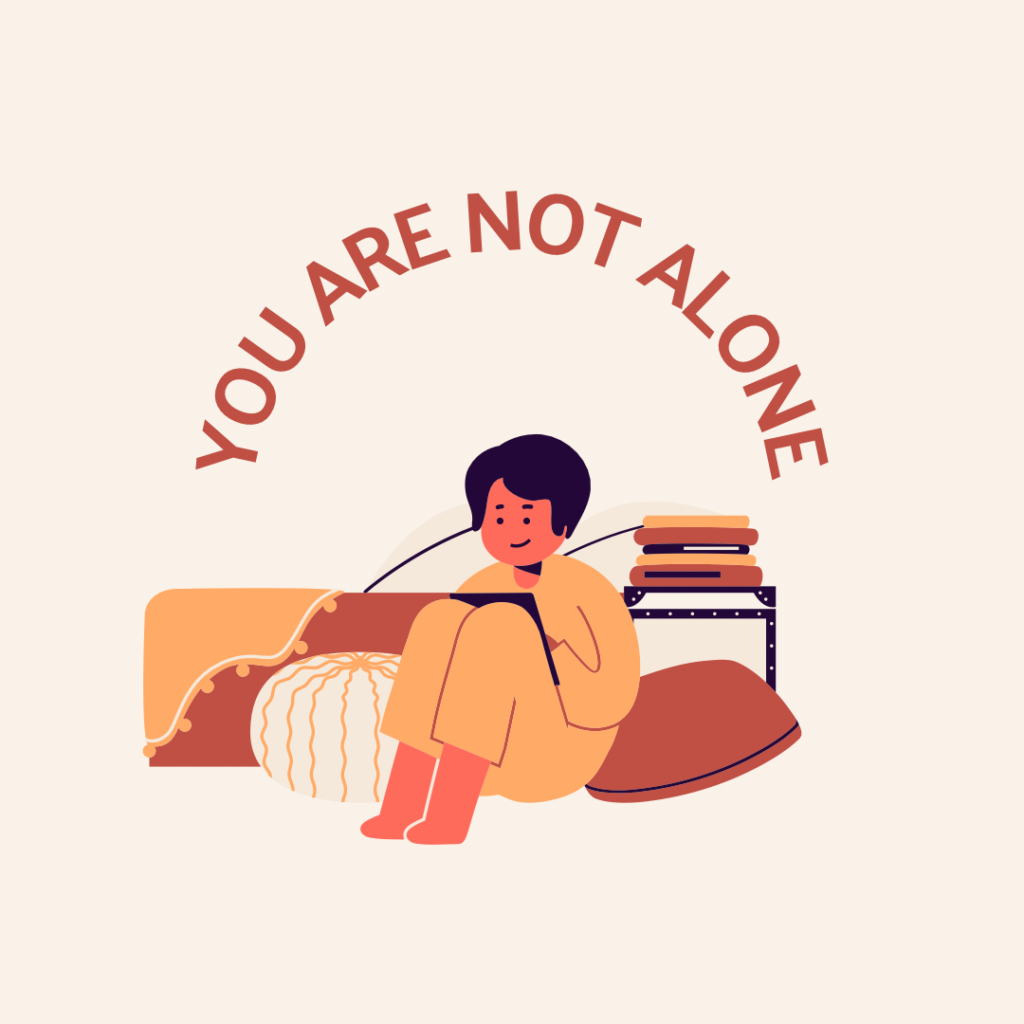Stigma, a mark of social disgrace associated with a particular quality. 43.8 million adults experience mental illness each year; that’s 1 in 5 adults in America. Even though mental illness is widely experienced by millions, there’s still so much stigma surrounding it. The stereotype around mental health pushes many people to not speak up or get help for themselves which ultimately causes things to just get worse. There is a desperate need to destroy the stigma surrounding mental illness and normalize speaking up and getting support.
Types of stigmas surrounding mental illness
The acceptance of Mental health disorders has been mostly accepted by the public in recent years. Even though its “accepted”, many individuals still have a destructive outlook on those with a mental illness. A study done by Prof Graham Thornicroft, identified the different types of stigmas that revolve around mental health disorders.
The first, and most common, is public stigma. Public stigma involves the negative or discriminatory attitudes that others have about mental illness. For example, a teacher calls a mentally ill student lazy and incompetent rather than addressing their mental illness and offering support. Stereotypes are the most common, and most harmful examples of public stigma.
Next, self-stigma is the negative attitudes, including suppressed shame, that populaces with mental illness have about their own condition. One example of this is feeling like you’re a burden to people in your life. Self-stigma can become so severe and life threatening because you are essentially attacking yourself. When one attacks themselves mentally, it can lead to physically as well, frequently leading to suicidal ideation. Self-stigma is a huge reason why people with mental disorders withdraw and isolate themselves, to fundamentally avoid or suppress these feelings.
The third and final is institutional stigma. This version is systemic, encompassing policies of government and private organizations that intentionally or unintentionally limit opportunities for people with mental illness. Examples include lower funding for mental illness research or fewer mental health services related to other health care services.

The harmful effects of stigma
– Shame
– Hopelessness
– Isolation
– Refusing treatment or help
– Not wanting to speak up
– Fewer opportunities for employment
– Bullying, physical violence, or harassment
– Self-doubt
– Lack of understanding by the people around you
– Health insurance that doesn’t cover treatment
Nine out of ten people with mental illness have experienced stigma and discrimination that has negatively affected their lives since their diagnosis.
Depression
Depression is a usual but serious mood disorder. It causes dreadful symptoms that affect how a person feels, thinks, and handles daily activities, such as sleeping, eating, or working.
There is a variety of depressive disorders all caused by different things or nothing at all.
–Major depression includes symptoms of depressed mood or loss of interest, most of the time for at least 2 weeks, that interfere with daily activities
–Persistent depressive disorder (also called dysthymia or dysthymic disorder) consists of less severe symptoms of depression that last much longer, usually for at least 2 years.
–Perinatal depression is depression that occurs during or after pregnancy. Depression that begins during pregnancy is prenatal depression and depression that begins after the baby is born is postpartum depression.
–Seasonal affective disorder is depression that comes and goes with the seasons, with symptoms typically starting in the late fall and early winter and going away during the spring and summer.
–Depression with symptoms of psychosis is a severe form of depression in which a person experiences psychosis symptoms, such as delusions (disturbing, false fixed beliefs) or hallucinations (hearing or seeing things others do not hear or see)
Bipolar disorder also typically has symptoms of depression within itself. More commonly with BP (bipolar disorder) are depressive episodes. These episodes cause feelings of hopelessness, sadness, and low motivation. This disorder causes a person to have extremely low lows and very high highs and staggering mood changes that can switch awfully quickly. Along with having depressive episodes, a person with BP experiences manic episodes. When someone is manic, they will have elevated moods, and a high activity level. Once the mania wears off, the person will crash and often be left in a depressive state, and the cycle continues.
If an individual is facing tons of stressors with this mental disorder alone, how do you think it feels to be largely stigmatized by themselves, others, and systems? Depression by itself is an extremely damaging mental illness, sometimes leading to suicide. Along with the draining nature of depression, being stereotyped and discriminated against can and will make their problems worse, ultimately leading to a harder recovery.

Anxiety
Anxiety is a mental illness that causes feelings of fear, dread, and uneasiness. Sweating, restlessness, feeling tense, and a racing heart rate are just some of the effects of anxiety. People with anxiety disorders commonly have frequent intrusive thoughts or worries. One often will avoid certain situations due to overthinking.
There are many types of anxiety disorders, like depression.
–Generalized anxiety disorder. You feel intense, unrealistic feelings of worry and tension often with little or no reason.
–Panic disorder. You feel sudden, powerful fear that brings on a panic attack. During a panic attack you may start to excessively sweat, have chest pain, and a pounding heartbeat. Sometimes you may feel like you’re choking or having a heart attack. A lot of people have been sent to the hospital due to mistaking a panic attack for a physical medical condition.
–Social anxiety disorder. Also, can be referred to as social phobia. This can cause you to feel overwhelmed, worried, and self-conscious about everyday social situations. You obsessively worry about being staired at, judged, or embarrassed inn public.
–Specific phobias. You feel intense fear of a specific object or situation, such as heights or flying. The fear goes beyond what’s appropriate and may cause you to avoid ordinary situations.
–Agoraphobia. You have an intense fear of being in a place where it seems hard to escape or get help if an emergency occurs. For example, you may panic or feel anxious when on an airplane, on public transportation, or standing in line with a crowd.
–Separation anxiety. Little kids aren’t the only ones who feel scared or anxious when a loved one leaves. Anyone can get separation anxiety disorder. If you do, you’ll feel very anxious or fearful when a person you’re close to leaves your sight. You’ll always worry that something bad may happen to your loved one.
–Selective mutism. This is a type of social anxiety in which young kids who talk normally with their family don’t speak in public, like at school.
–Medication-induced anxiety disorder. Use of certain medications or illegal drugs, or withdrawal from certain drugs, can trigger some symptoms of anxiety disorder.
Researchers don’t know exactly what brings on anxiety disorders. An intricate mix of things play a role in who does and doesn’t get one. It can be challenging and frustrating to live with an anxiety disorder. The constant worry and fear can make you feel tired and scared; often Anxiety can drive people to intense isolation to escape the everyday worries. The stress of anxiety disorders can also lead to other mental illnesses like depression.
Stigma related to anxiety
-The belief anxiety is not a real medical illness.
-People believe that people with anxiety could just “snap out of it.”
-A sign of personal weakness.
-People with an anxiety disorder should be ashamed.
-Not suitable for employment if you have an anxiety disorder.
-It’s just an excuse to be lazy.
-People with anxiety are self-centered
-Danger to others.
-Someone with an anxiety disorder feels like a burden to others.
Anxiety is a scientifically proven medical diagnosis. This mental disorder makes average daily tasks like leaving the house challenging. People who have been diagnosed with an anxiety disorder need support and love from the people around them to help them feel like their illness isn’t a burden. The challenges of anxiety alone are enough for one person to deal with; the stigma around this mental illness is all false and degrading. People need to be treated like humans, even when they have a medical diagnosis that makes their life harder.
These are just two very common mental illnesses that people experience discrimination over. Since so many people experience these mental disorders, you would expect a lot of people have the experience and knowledge of the stigma; That is actually false. Stigma around mental illnesses are normalized and not fought against enough, and that needs to be changed.

How to reduce stigma?
-Openly talk about mental health/normalize speaking out. Places like social media, or online blogs are great spaces to spread positivity and awareness to a lot of people. If you don’t want to do the posting and instead want to educate yourself, here is a list of accounts that spread mental health positivity that you can follow.
-Respond to negative comments by using facts and experiences. Use polite and educational language, you do not want to counter argue your point.
-Show compassion for people with mental illnesses.
-Empower those who struggle with their mental health, don’t drag them down or shame them.
-Normalize getting help and treatment.
-Fight stigma by not having self-stigma. Don’t hide from the world, show that even while fighting a mental illness you can be powerful.
-Be kind.
The stigma against mental health needs to be stopped, and that can only happen if people are educated and do their part. Educate a friend, a family member, a coworker, or anyone that may be unaware about the harm of mental health discrimination. Regardless of who you are or where you live, you can always do your part to help end the stigma around mental disorders.
You are never alone in your fight; help is always available.
-If you or someone you know is having a mental health emergency dial 988
-Teen and Young Adult Helpline, for peer support text “Friend” to 62640 or call 800-950-6264
-National Suicide Prevention Lifeline: 1-800-273-8255
-Suicide Prevention, Awareness, and Support: www.suicide.org
-Crisis Text Line: Text REASON to 741741
-Self-Harm Hotline: 1-800-DONT CUT (1-800-366-8288)

Sources
Simply Psychology – Self-Care, Theories, Famous Studies & More
https://www.ncbi.nlm.nih.gov/pmc/articles/PMC1489832/
https://www.samhsa.gov/find-help/national-helpline
https://www.psychiatry.org/patients-families/stigma-and-discrimination









